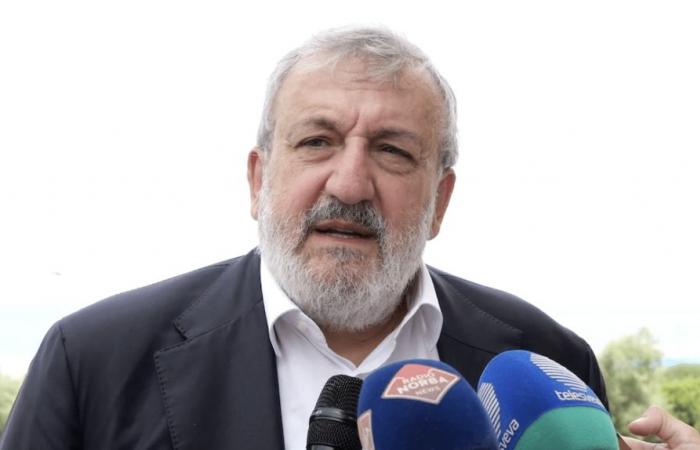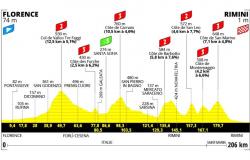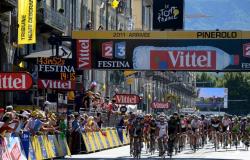LPuglia is confirmed first in Italy, for the fourth consecutive year, for the quality of bathing water (99.7% excellent), followed by Friuli Venezia Giulia (99%), Sardinia (98.4%), Tuscany ( 98.2%). It is the result of microbiological analyzes conducted over the course of four years (2020-2023) by the SNPA, the national system for the protection of the environment (the network that coordinates the various regional environmental agencies present on the national territory, including the ‘Harp Puglia).
The president of the Puglia Region, Michele Emilianothe regional councilor for the Environment, Serena Triggiani, the general director of Arpa Puglia, Vito Bruno, the scientific director of Arpa Puglia, Vincenzo Campanaro and the director of the Regional Sea Center of Arpa Puglia, Nicola Ungaro.
“For the fourth consecutive year Puglia has the cleanest sea in Italy, a result for which we must thank the people of Puglia, the municipalities, the mayors, the Apulian Aqueduct for the purifiers, the discipline of the companies, for a result of truly extraordinary team” is the president’s comment Emiliano. “Arpa is the proactive guardian of these environmental remediation results of the Puglia Region, we have resolved an infinite number of infringements linked to polluted sites because Arpa follows large dangerous industrial sites. For this reason my thanks go to Arpa together with the commitment to stabilize all the young professionals who still work here with fixed-term contracts, because without their professional quality it would have been impossible to obtain these results. Puglia has the cleanest sea in Italy, a result like this cannot be achieved by snapping your fingers but with very hard team work. And our region can count on a magnificent team” declared the president of the Puglia Region.
“Clean and uncontaminated water: Puglia reconfirms itself as a leading region – declared the Environment Councilor of the Puglia Region, Serena Triggiani -, with an undisputed record for the quality of bathing water. Arpa’s monitoring has confirmed this and, recently, for the year 2024 the Foundation for Environmental Education (FEE) has also awarded 24 blue flags, with three new recognized seaside resorts that respect criteria such as sustainable management of territory. These are extraordinary results but they are backed by constant and intense management, monitoring and control work, which as a Region we carry out with Arpa Puglia and Acquedotto Pugliese, with its purification plants. We enjoy a marine and coastal wealth that the whole world envies us, but which must be preserved with the daily actions of every single person. As a Region we are focusing not only on environmental protection interventions to guarantee a sustainable present and future: the regional sustainable development strategy we have equipped ourselves with is a fundamental programming document that we are implementing on various fronts. But we are also launching specific actions to raise public awareness aimed at caring for our beaches and raising awareness, especially among the younger generations, of the landscape, tourism, economic and social heritage that Puglia holds”.
“This year too, Puglia is first for the quality of its bathing water. A data certified by the National Environmental Protection System, a network system that monitors and controls all Italian coasts, consolidated from a scientific point of view. It is an excellence for our country, a guarantee that does not only concern the environmental quality of the waters but their healthiness, therefore the health of the seas in which many citizens and many tourists who flock to Puglia bathe, therefore we are happy to have won the fourth consecutive championship” commented the general director of Arpa Puglia Vito Bruno.
In Italy
Good news also for the entire Italian coast monitored by the National Environmental Protection System. On the basis of the monitoring activities of the National Environmental Protection System, the classification of the stretches of coast used for bathing has been updated. The results show that 5,090 kilometers of marine stretches (95.6% of the monitored coast) are included in the “excellent” quality class, the highest foreseen by the European classification system. If we also add the sections with a “good” classification (153 kilometres, equal to 2.9% of the total) we arrive at 98.5%. Thirty-two kilometers (0.6%) fall into the “sufficient” quality class, 44 kilometers into “poor” quality (0.8%).
The kilometers of coastline in “excellent” quality reach very high percentages in every region. Similar percentages emerge for the quality of bathing water in lakes and rivers: out of the 662 kilometers on which monitoring takes place, 630 kilometers are bathed in water of excellent quality, equal to 95.2% of the total monitored. Twenty kilometers are of good quality (3.1%), 6 kilometers of sufficient quality (0.9%), 1 kilometer of poor quality (0.2%).
These are now consolidated data, which confirm what was found in previous years, the result of the surveillance and control activity carried out by the environmental agencies, which carry out monitoring in most of the regions. Over the course of 2023, the SNPA took approximately 26 thousand samples of sea water and over 2,300 samples of water from rivers and lakes, for a total of more than 28 thousand samplings. There are two microbiological parameters on the basis of which the bathing suitability of the water is evaluated, the concentrations of Escherichia coli and intestinal enterococci. Overall, there are 4,710 areas on which monitoring is carried out. At a European level, Italian waters are better than the average of EU countries, based on data processed by the European Environment Agency.
The classification in force this bathing season is based on the monitoring campaigns carried out in the previous four years and is the one that is also communicated to the European Environment Agency. The sampling then continues throughout the current bathing season, having already started several weeks ago. The results are published on the websites of the individual Arpas and on the Water portal of the Ministry of Health. If the legal limits are exceeded, the results are transmitted to the local authorities for the issuing of temporary bathing bans.
The monitoring and classification work carried out by the SNPA arises from the European Directive 2006/7/EC on the management of the quality of bathing water, from Legislative Decree 116/2008 transposing the Community Directive and from the implementing decree DM 30 March 2010, which establishes the rules of classification throughout the European Community of bathing water into four quality classes: excellent, good, sufficient and poor.
To protect the health of bathers, Arpa also carries out surveillance monitoring for potentially toxic organisms (cyanobacteria, algae such as Ostreopsis ovata) both in marine and lake waters, preparatory to the possible adoption of restrictive measures in the conditions established by law. Furthermore, the environmental agencies also carry out extraordinary sampling in case of anomalies, for example the presence of foams and anomalous colours, with investigations also aimed at ascertaining any chemical contamination (surfactants and hydrocarbons).
The percentages for marine waters refer to the total coast monitored by SNPA, therefore excluding the Sicilian coast, monitored by the regional health system, and the areas permanently prohibited for bathing for various reasons (river mouths, ports, military areas, protected areas ) in which withdrawals are generally not made. For river and lake waters, the data also refers to Lombardy and the Province of Trento where monitoring is carried out by the health system.
In Puglia
Along the approximately 1000 km of the Apulian coast, the Puglia Region has identified, pursuant to the current reference legislation, as many as 676 “waters” (tracts) intended for bathing, which correspond to a linear total of approximately 800 km: in particular they are 254 bathing waters have been identified in the province of Foggia, 46 in the province of Bat, 78 in the province of Bari, 88 in the province of Brindisi, 139 in the province of Lecce and 71 in the province of Taranto (the lists of these waters, broken down by province , are reported in the Regional Council resolutions from n. 2465 to n. 2470 of 16 November 2010 and subsequent amendments). Arpa Puglia monitors regional bathing water, checking its quality. During the seasonal monitoring period, various meteorological-marine parameters are measured in the field at each “station point”, while the samples are analyzed in the laboratory to determine the bacterial load, calculated, as by the other Italian agencies, with respect to threshold values of two microbiological parameters: “Intestinal enterococci” and “Escherichia coli”; in relation to the samples collected, it is estimated that every year the Apulian Agency carries out approximately 8,500 laboratory analytical determinations.
As regards Puglia, 0.3% of bathing water in the “not excellent” quality class concerns the following sites: “Foce Fiume Lauro (30 m to the right)” and “Foce Fiume Lauro (30 m to the left) in the lagoon of Lesina, both classified as “sufficient” quality, “Fogna Cit.na Molfetta (500 m south)” along the coast of the town of the same name and “Spiaggia libera Ginosa Marina-Fiume” in the province of Taranto, both classified as “good” quality ”, However, it should be noted that of the four sites described above, two concern marine-coastal waters (along the coast of Molfetta and Ginosa Marina), while the other two refer to transition waters (in this case the Lesina lagoon).
All data is available on the institutional website of Arpa Puglia, at the web address https://www.arpa.puglia.it/pagina2885_balneazione.html, where it is possible, using an interactive map, to view the geographical location of bathing waters as well as individual monitoring points, to which the most up-to-date analytical results are associated; the same web page also reports the data, in tabular form and in the form of a monthly bulletin, also for the periods prior to the one displayed. Precisely by virtue of the monitoring carried out, Arpa Puglia has available and processes a considerable amount of data, which allows it to provide a picture of the annual situation and the historical series regarding the state of quality of Apulian bathing water.






